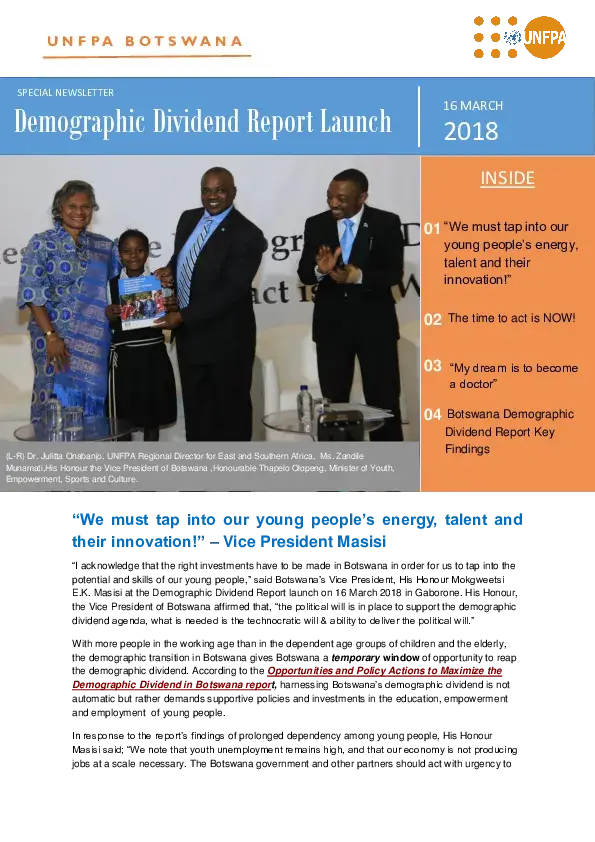Botswana is one of the countries that experienced significant decline in fertility and mortality in the last five decades. This resulted in the country’s age-structure shifting from one with more child dependents to that with significantly more people in the economically productive ages. Currently about two-thirds of Botswana population constitutes the working-age population (between the ages of 15-64 years). This youthful and changing age structure provides the requisite boost to economic growth and development, particularly growth in new jobs, to absorb the rapidly growing working-age population.
The Demographic Dividend Report demonstrates that Botswana’s window of opportunity for harnessing the first demographic dividend opened before 1990, while the magnitude of the first demographic dividend peaked in 2008 and it is now in the diminishing returns phase until around 2050, the time at which the window of opportunity will close. The report also shows that the cumulative boost in living standards emanating from the first demographic dividend between 1990 and 2060 will be 36%, of which, 24% has already been accumulated between 1990 and 2015 while the remaining boost of 12% will accrue between 2015 and 2060. Furthermore, the report reveals that young people remain dependent till age 32, only at age 33 they start producing more than they consume and that the country has a uniquely high level of consumption that has produced a huge lifecycle deficit (between consumption and labour income) implying that the country lives beyond its means, which is not sustainable in the long-term. The results also show that boosting Botswana’s job creation capacity for young people at the rate of the global median profile for other countries with NTA data would boost living standards of the population by about 20.5% between 2015 and 2035.


